The International Space Station: Expedition 34
Advertisements:
A photograph taken by a member of Expedition 34, aboard the International Space Station, looking down on the Bahamas from orbit, on January 13, 2013. (Photo by NASA via The Atlantic)
Recovery vehicles surround the Soyuz TMA-05M spacecraft seen shortly after a successful landing with the ISS crew of Japanese astronaut Aki Hoshide, Russian cosmonaut Yury Malenchenko and U.S. astronaut Sunita Williams near the town of Arkalyk, Kazakhstan, on November 19, 2012. (Photo by Sergei Remezov/AP Photo via The Atlantic)
The Soyuz TMA-05M spacecraft departs from the International Space Station and heads toward a landing in a remote area outside the town of Arkalyk, Kazakhstan, on November 19, 2012 (Kazakhstan time). NASA astronaut Sunita Williams, Expedition 33 commander; Russian cosmonaut Yuri Malenchenko, Soyuz commander and flight engineer; and Japan Aerospace Exploration Agency astronaut Aki Hoshide, flight engineer, returned from four months onboard the space station where they served as members of the Expedition 32 and 33 crews. (Photo by NASA via The Atlantic)
A Soyuz rocket is rolled out to the launch pad by train at the Baikonur Cosmodrome on December 17, 2012. Launch of the Soyuz rocket sent Expedition 34/35 Flight Engineer Tom Marshburn of NASA, Soyuz Commander Roman Romanenko and Expedition 35 Commander Chris Hadfield of the Canadian Space Agency (CSA) on a five-month mission aboard the International Space Station. (Photo by Carla Cioffi/NASA via The Atlantic)
A Soyuz TMA-07M spacecraft carrying the ISS crew of Thomas Marshburn, Roman Romanenko and Chris Hadfield, blasts off from the Baikonur Cosmodrome, on December 19, 2012. (Photo by Shamil Zhumatov/Reuters via The Atlantic)
As the ISS and Soyuz TMA-07M spacecraft were making their relative approaches on December 21, one of the Expedition 34 crew members on the orbital outpost captured this photo of the Soyuz (upper left) and a gibbous moon (lower right). (Photo by NASA via The Atlantic)
A nighttime view of Liege, Belgium, photographed by an Expedition 34 crew member on December 8, 2012. The brightly lit core of the Liege urban area appears to lie at the center of a network of roadways extending outwards into the rural, and relatively dark, Belgium countryside. For a sense of scale the distance from left to right is approximately 70 kilometers. The image was taken using the European Space Agency's Nodding mechanism, also known as the NightPod. NightPod is an electro-mechanical mount system designed to compensate digital cameras for the motion of the space station relative to Earth. The primary mission goal was to take high-resolution, long exposure digital imagery of Earth from the station's Cupola, particularly cities at night. (Photo by NASA via The Atlantic)
Typhoon Bopha moves toward the Philippines, observed from the ISS, on December 2, 2012. (Photo by AP Photo/NASA via The Atlantic)
Stockings, hung with care on Christmas Day, 2012 aboard the ISS. The individual names of the six Expedition 34 crew members are inscribed on their respective stockings. The scene is actually in Node 1, called Unity, which was the first U.S.-built element that was launched, and it connects the U.S. and Russian segments of the orbital outpost. (Photo by NASA via The Atlantic)
Newly arrived Expedition 34 Flight Engineer Tom Marshburn uses the Body Mass Measurement Device in the Zvezda service module aboard the ISS, on December 23, 2012. (Photo by NASA via The Atlantic)
Robonaut 2, in the ISS's Destiny laboratory, during a round of testing for the first humanoid robot in space, on January 2, 2013. Ground teams put Robonaut through its paces as they remotely commanded it to operate valves on a task board. Robonaut is a testbed for exploring new robotic capabilities in space, and its form and dexterity allow it to use the same tools and control panels as its human counterparts do aboard the station. (Photo by NASA via The Atlantic)
Canadian Space Agency astronaut Chris Hadfield strums his guitar in the ISS's Cupola on December 25, 2012. Hadfield, a long-time member of an astronaut band called Max Q, later joined with the other five Expedition 34 crew members in a more spacious location to provide an assortment of Christmas carols for the public. (Photo by NASA via The Atlantic)
This January 8, 2013 photo provided by NASA, taken by Astronaut Chris Hadfield from the ISS, shows a view of the wildfire near Burrinjuck Dam in Australia. Look closely and you can see the flames from orbit. (Photo by Chris Hadfield/AP Photo/NASA via The Atlantic)
The coastline of the northeastern U.S., observed from the ISS on February 14, 2013. The Atlantic Ocean, including Cape Cod Bay and Buzzards Bay along the coastlines of the states of Massachusetts and Rhode Island has a burnished, mirror-like appearance in this image. This is due to sunlight reflected off the water surface back towards the astronaut-photographer. The peak reflection point is towards the right side of the image, lending the waters of Long Island Sound (at image center, to the north of Long Island) and the upper Massachusetts coastline an even brighter appearance. Sunglint also illuminates surface waters of Chesapeake Bay (top center) located over 400 km to the southwest of the tip of Long Island. The high viewing angle from the ISS also allows the Earth's curvature, or limb, to be seen, and blue atmospheric layers gradually fade into the darkness of space across the top part of the image. (Photo by NASA via The Atlantic)
One of the Expedition 34 crew members captured this night panorama featuring a display of Northern Lights, and scattered lights in the more highly populated areas in the state of Colorado and possibly the states north of it, on February 10. 2013. (Photo by NASA via The Atlantic)
Canadian Space Agency astronaut Chris Hadfield uses a camera to photograph the Earth from a window in the Cupola of the ISS, on January 7, 2013. (Photo by NASA via The Atlantic)
An unpiloted ISS Progress resupply vehicle approaches the ISS, carrying 1,764 pounds of propellant, 110 pounds of oxygen and air, 926 pounds of water and 3,000 pounds of spare parts, experiment hardware and logistics equipment – 2.9 tons of supplies in all – for the Expedition 34 crew members. Progress 50 docked to the station's Pirs docking compartment on February 11, 2013. (Photo by NASA via The Atlantic)
The SpaceX Falcon 9 rocket with the Dragon capsule, lifts off from the Cape Canveral Air Force Station on a second resupply mission to the International Space Station in Cape Canaveral, Florida, on March 1, 2013. (Photo by Scott Audette/Reuters via The Atlantic)
NASA astronaut Kevin Ford, Expedition 34 commander, watches a water bubble float freely between him and the camera, showing his image refracted, in the Unity node of the ISS, on January 30, 2013. (Photo by Reuters/NASA via The Atlantic)
The hands of Expedition 34 Commander Kevin Ford, opening a bag revealing a highly welcomed shipment of fruit which was sent up from Earth a couple of days earlier and which arrived at the International Space Station on March 3, 2013. It was just a very small portion of all the fresh supplies which arrived aboard the unmanned Space X Dragon spacecraft. (Photo by NASA via The Atlantic)
One of the Expedition 34 crew members took advantage of clear skies over Indianapolis, Indiana on February 25, 2013, and captured this image of the capital city from a point some 240 miles above Earth. (Photo by NASA via The Atlantic)
The release the SpaceX Dragon-2 spacecraft from the International Space Station on March 26, 2013. The spacecraft, filled with experiments and old supplies, is in the grasp of the Space Station Remote Manipulator System's robot arm or CanadArm2 after it was undocked from the orbital outpost. Forming the backdrop for this image is western Namibia. The Dragon was scheduled to make a landing in the Pacific Ocean, off the coast of California later in the day. (Photo by NASA via The Atlantic)
The Dragon capsule uses parachutes to descend to the Pacific Ocean off the coast of Mexico's Baja Peninsula after leaving the ISS, on March 26, 2013. The vehicle brought back more than 1 ton of science experiments and old station equipment. It's the only supply ship capable of two-way delivery. NASA is paying SpaceX more than $1 billion for a dozen resupply missions. (Photo by AP Photo/SpaceX via The Atlantic)
Russian specialist assemble Russian Soyuz TMA-08M spacecraft for the launch of the next expedition to the ISS in the Russian-leased Baikonur Cosmodrome, on March 22, 2013. (Photo by AFP Photo via The Atlantic)
The Soyuz TMA-06M spacecraft lies passively on its side March 16 after bringing home Expedition 34 Commander Kevin Ford of NASA, Soyuz Commander Oleg Novitskiy and Flight Engineer Evgeny Tarelkin to a landing northeast of Arkalyk, Kazakhstan following a one-day delay due to inclement weather in the area. The Soyuz initially landed upright before being tilted on its side for servicing after touching down to wrap up 144 days in space and 142 days for Ford, Novitskiy and Tarelkin at the International Space Station. The three crewmembers were flown by helicopter to Kustanai, Kazakhstan en route to their homes in Houston and Star City, Russia. (Photo by Sergey Vigovskiy/NASA via The Atlantic)
A crew member of the next expedition to the ISS, US astronaut Christopher Cassidy checks his space suit prior to the launch of the the Soyuz TMA-08M spacecraft at the Baikonur Cosmodrome, on March 28, 2013. (Photo by Ramil Sitdikov/AFP Photo via The Atlantic)
A Soyuz-FG rocket booster with the Soyuz TMA-08M space ship carrying a new crew to the ISS, blasts off from the Baikonur Cosmodrome, in Kazakhstan, on March 29, 2013. (Photo by Dmitry Lovetsky/AP Photo via The Atlantic)
This image provided by NASA-TV shows the view from the Soyuz capsule as it approaches the International Space Station Thursday March 28, 2013. Chris Cassidy of the United States and Russians Pavel Vinogradov and Alexander Misurkin traveled six hours in the capsule before linking up with the space station's Russian Rassvet research module over the Pacific Ocean, just off Peru. It was the first time a space crew has taken such a direct route to the orbiting lab. Cassidy, Vinogradov and Misurkin are the first crew to reach the station after only four orbits instead of the standard 50-hour flight to reach the station. (Photo by AP Photo/NASA via The Atlantic)
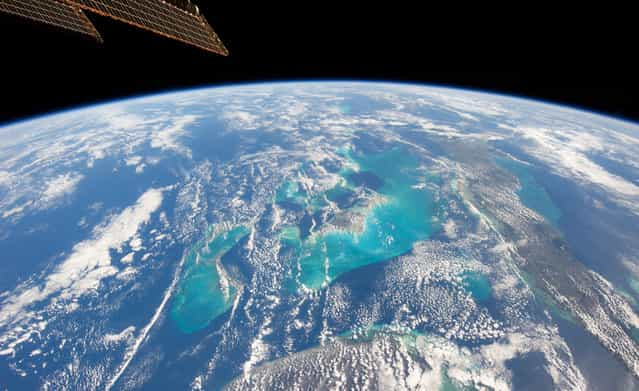
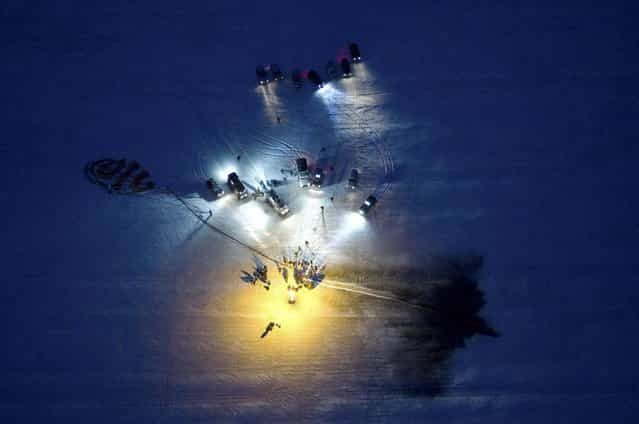
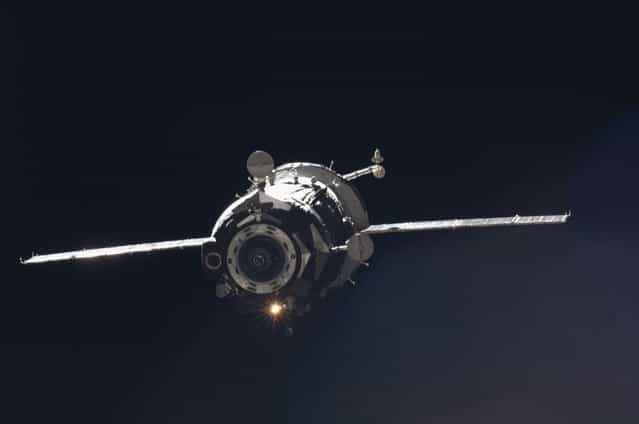
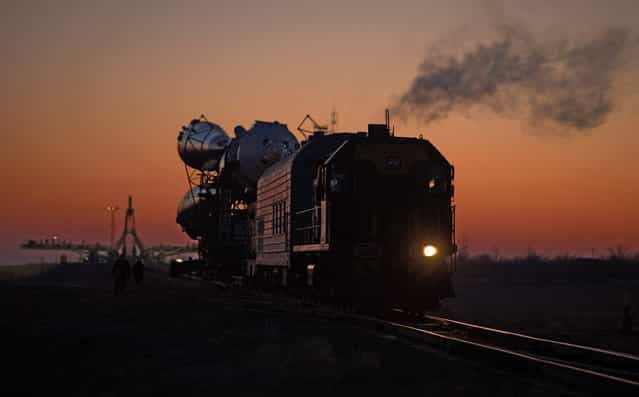
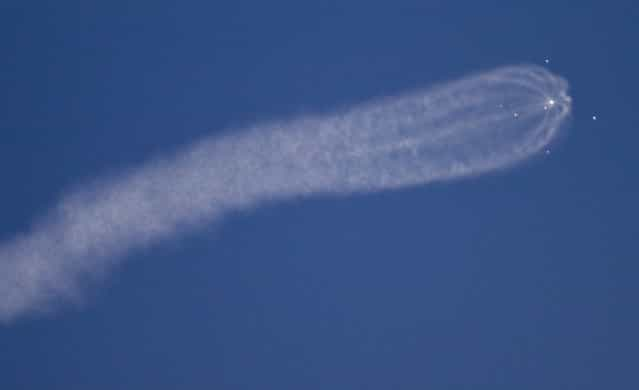
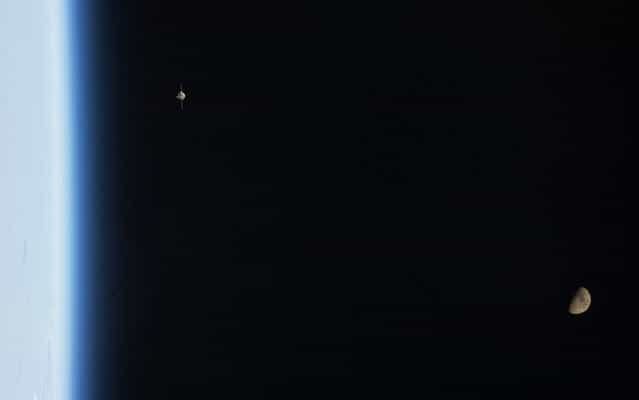

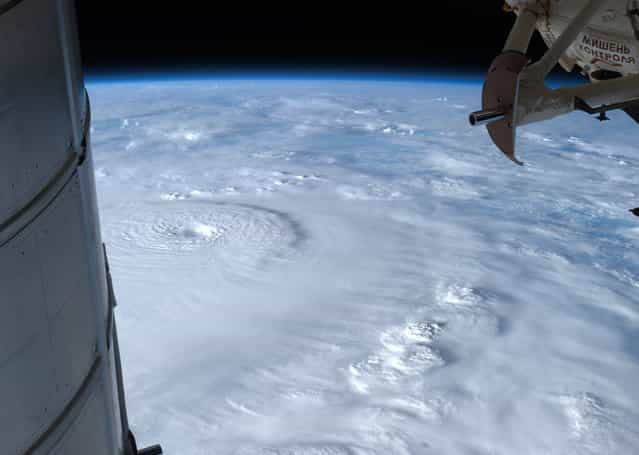
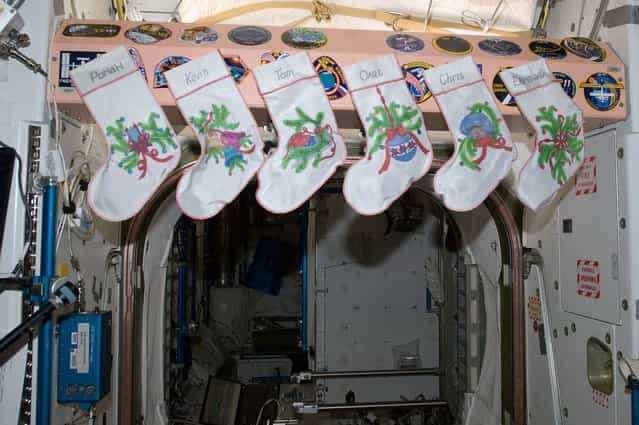
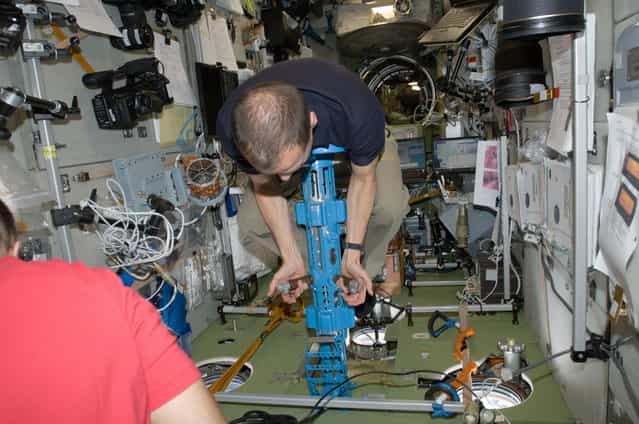
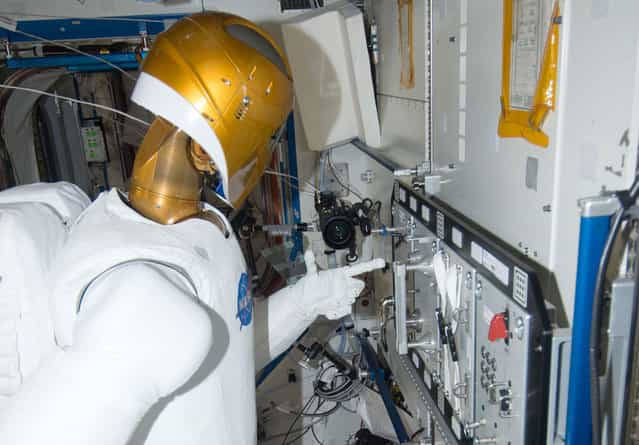
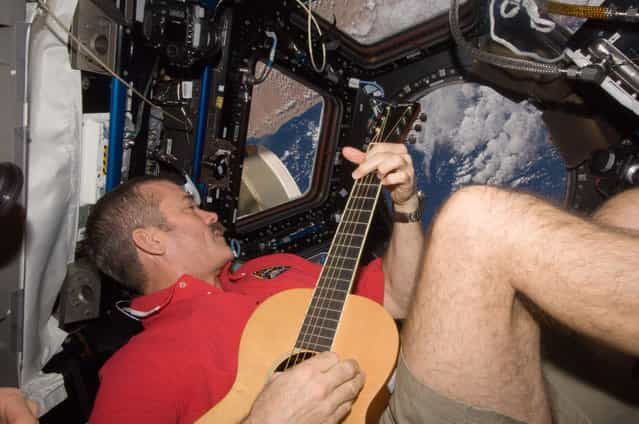
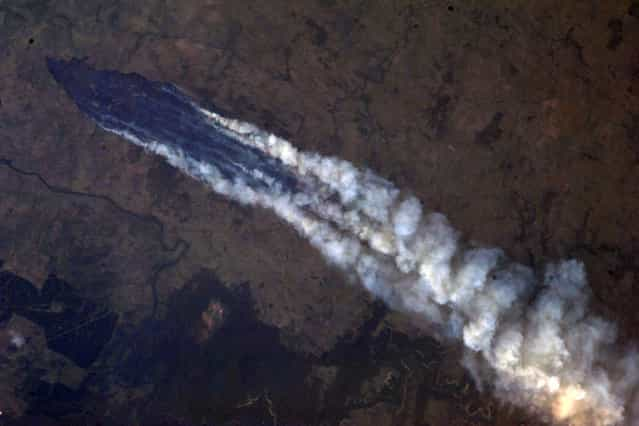

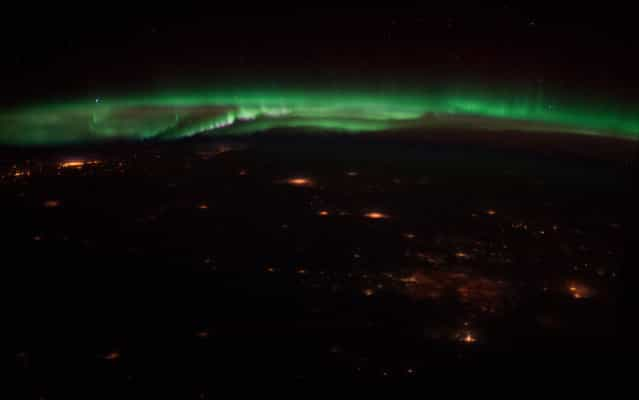
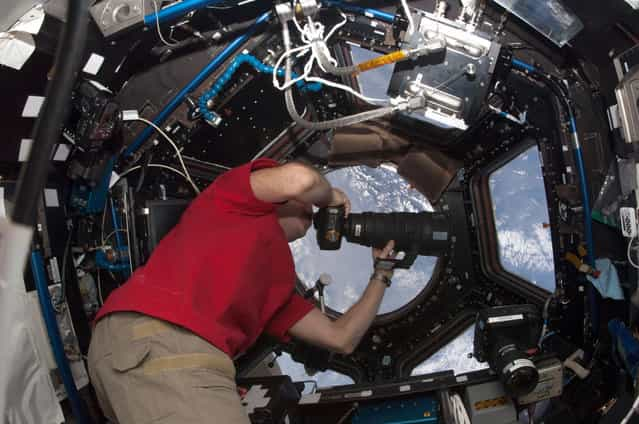
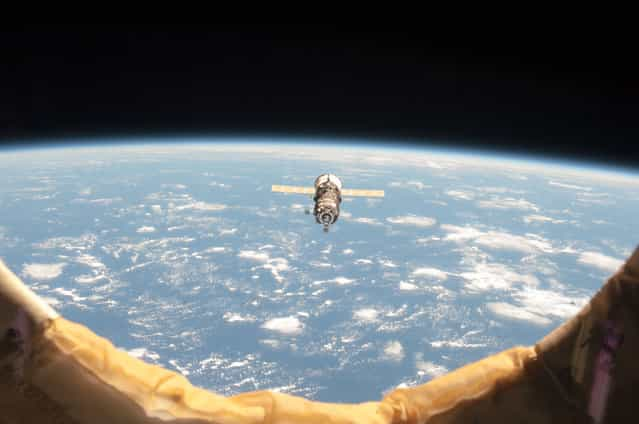
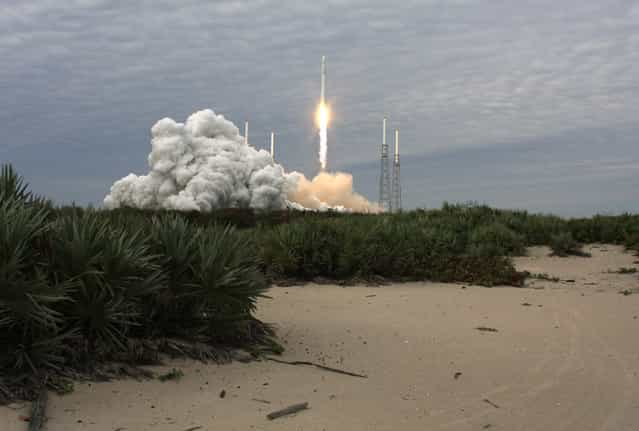
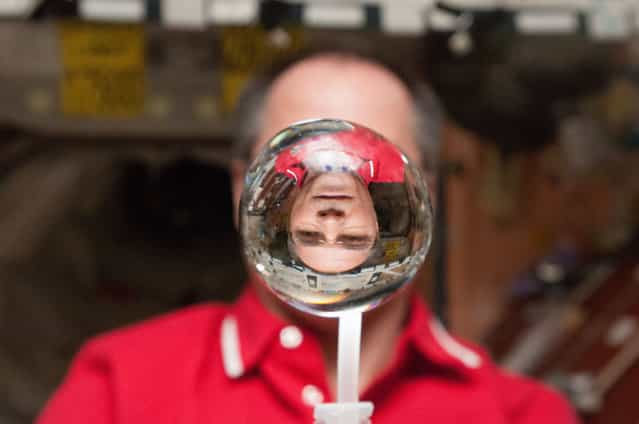
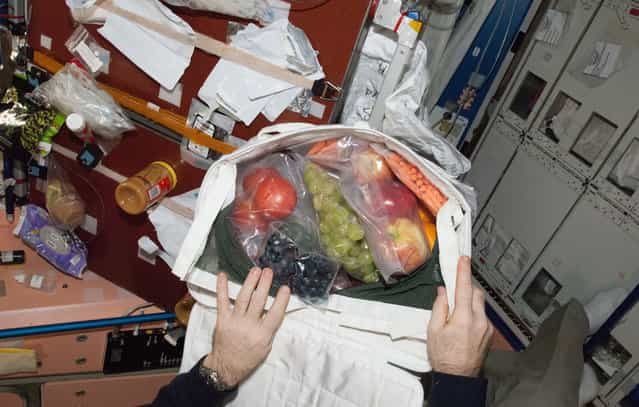
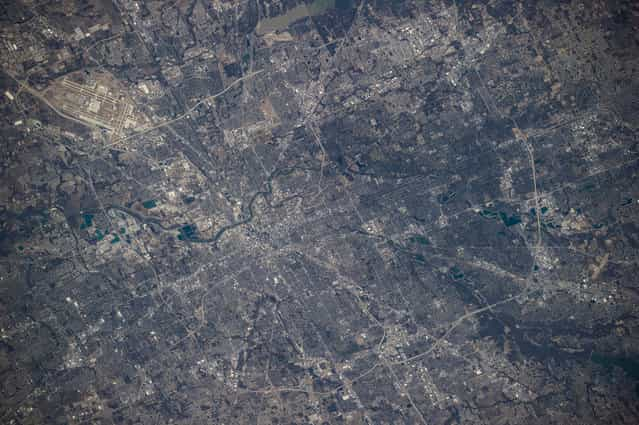
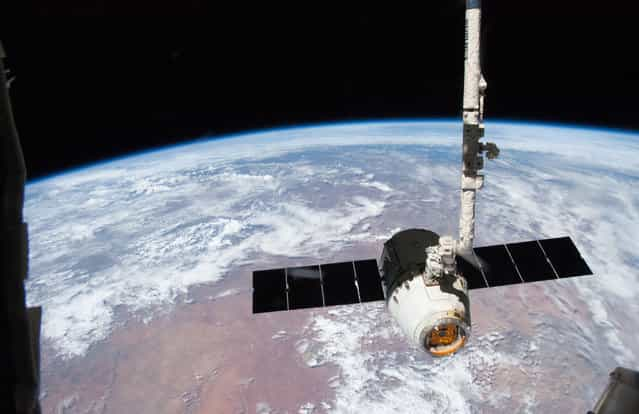
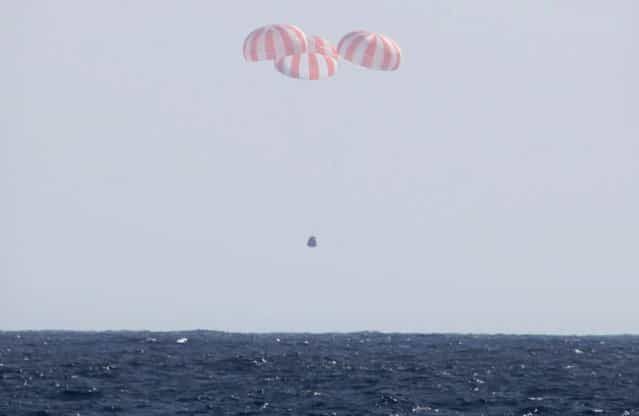
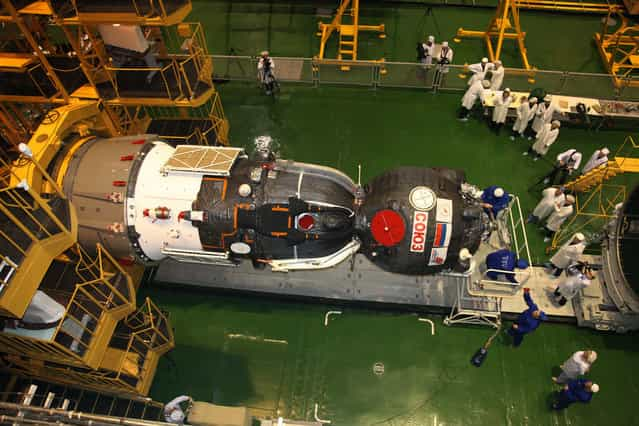
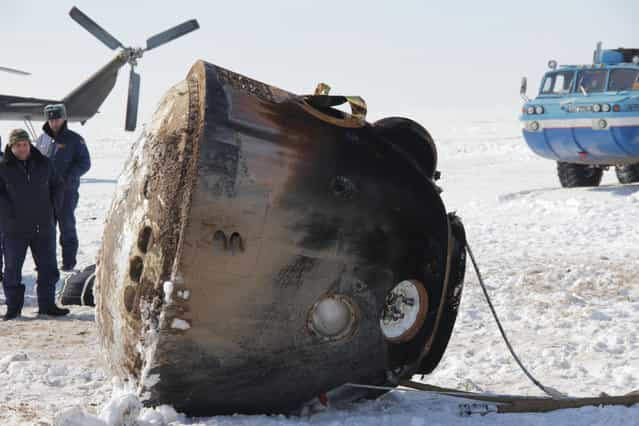
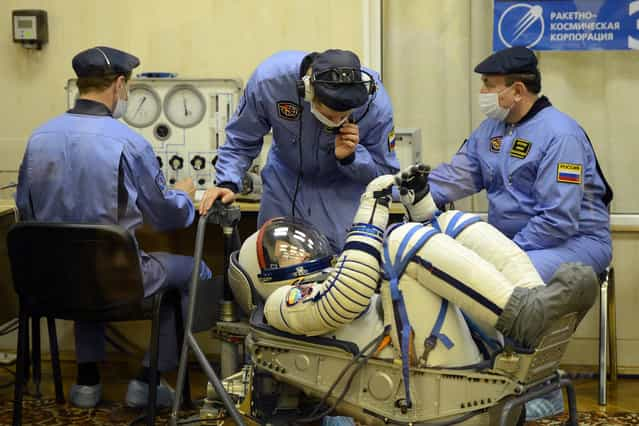
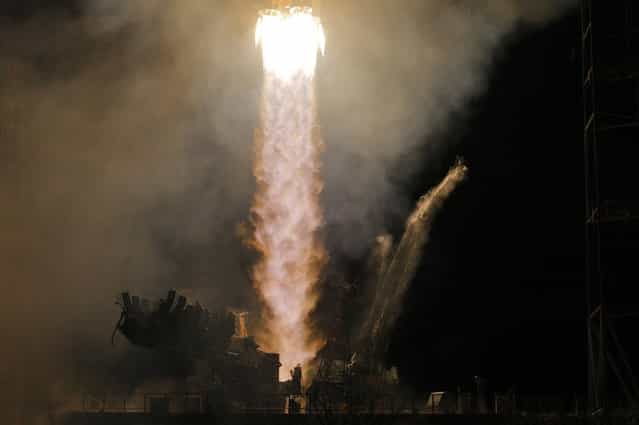
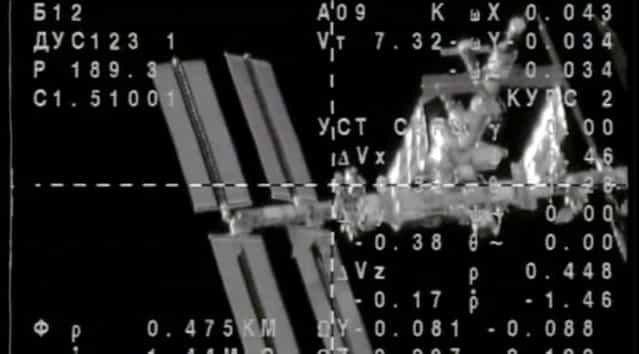
![[Space Oddity] [Space Oddity]](http://img.gagdaily.com/uploads/posts/fact/2013/short/0000d6e5_medium.jpg)
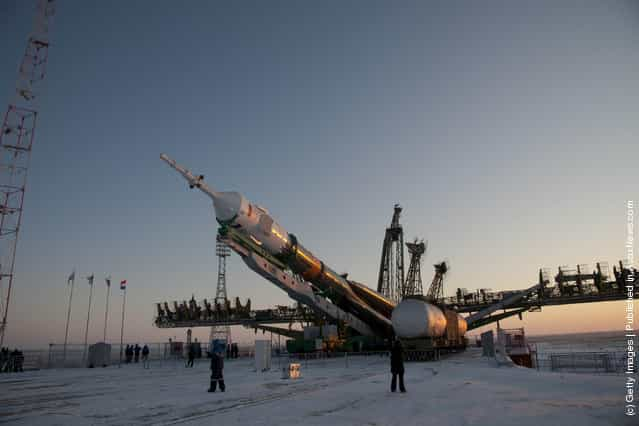
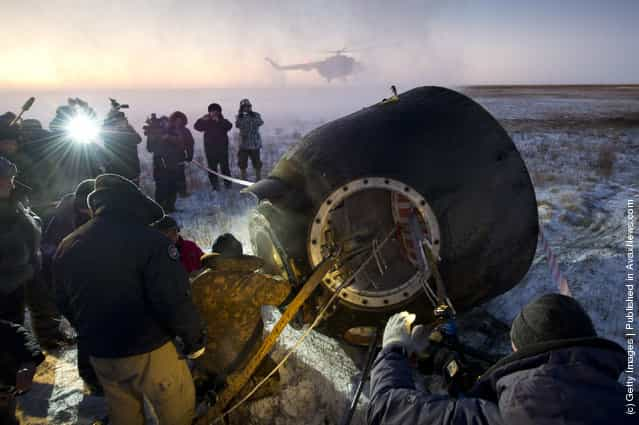
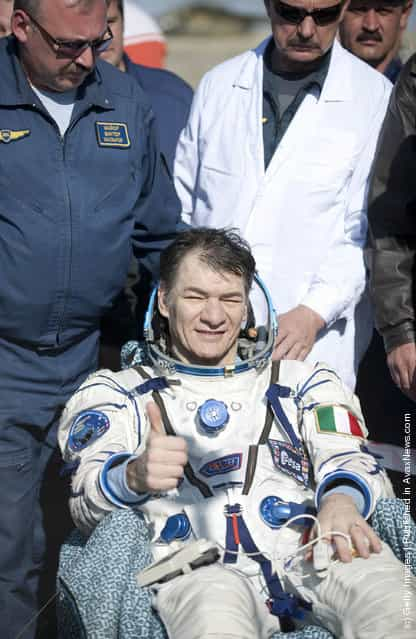
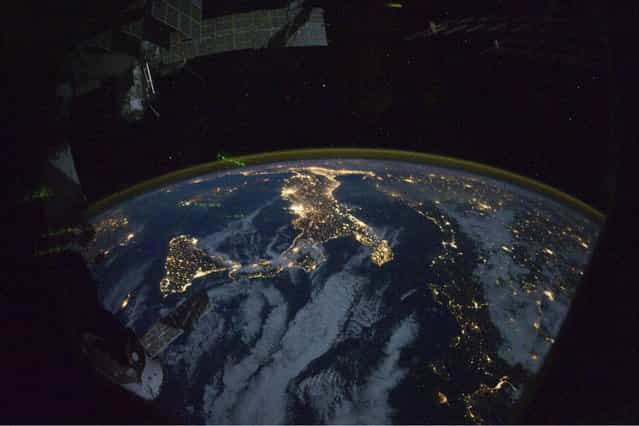
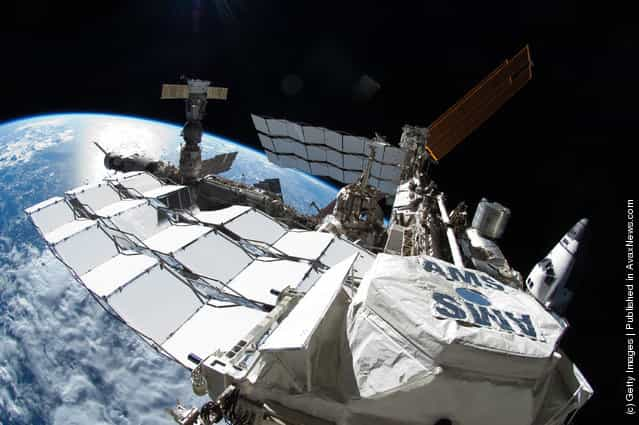
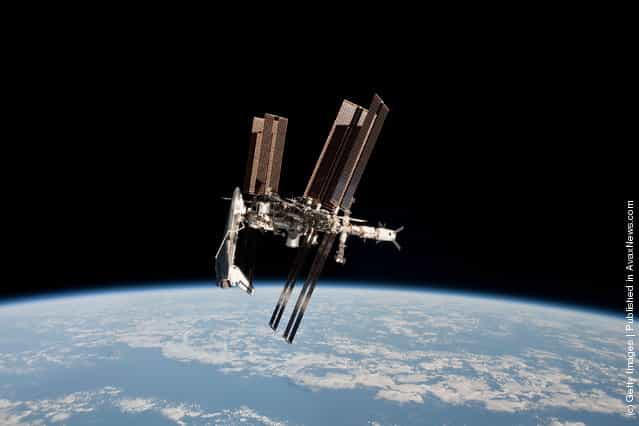
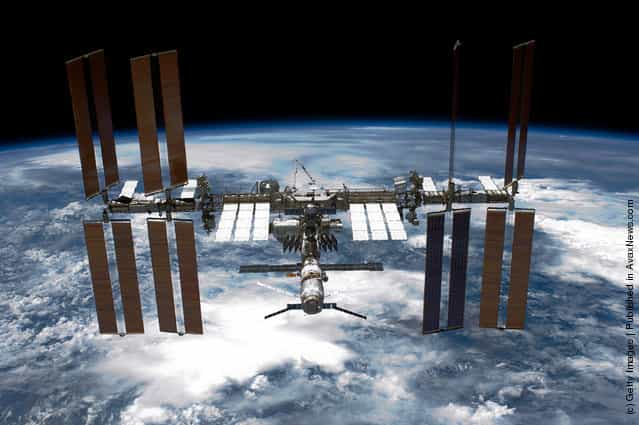

![Rare [Hybrid] Total Solar Eclipse Rare [Hybrid] Total Solar Eclipse](http://img.gagdaily.com/uploads/posts/fact/2013/short/00010c55_medium.jpg)






